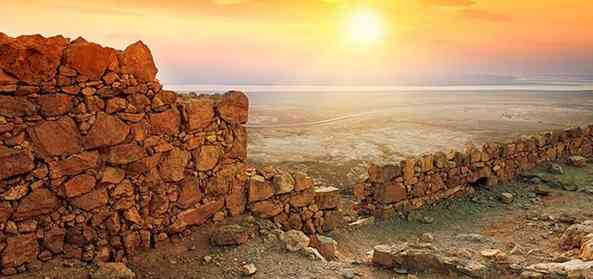
After completing our 3 1/2-year cycle of readings in the Torah, we decided to continue with the historical books that follow, beginning with Joshua.


After completing our 3 1/2-year cycle of readings in the Torah, we decided to continue with the historical books that follow, beginning with Joshua.
The eight-day feast of Hanukkah, a festival of lights, occurs in the darkest time of year. It commemorates the rededication of the Temple in 165 B.C. after it was cleansed by Judas Maccabeus when the Jews prevailed against the Seleucid Greeks of Syria. In the New Testament it is referred to as the Feast of Dedication.
Jewish tradition says that when the special oil for the Temple lamp stand could not be obtained in time, Judah Maccabeus took a step of faith (and a risk) by lighting the lamp with only one day’s supply of oil. It burned miraculously for eight days until the extra oil arrived.
Many scholars place the time of the Annunciation of the angel to Mary and the conception of Christ (rather than his birth) at this time of year, and the festival contains numerous types and foreshadowings of Christ’s coming.
God reveals the dream and its interpretation to Daniel. Nebuchadnezzar dreamed of a statue in the form of a man that represented Babylon and future world kingdoms. A stone smashes the statue’s feet, which are weakened by being a mixture of iron and clay. This turns out to be a prophecy of Christ’s kingdom overcoming all the other world’s powers and authorities. Nebuchadnezzar, amazed, declares Daniel’s God as supreme and rewards him with high office.
Nebuchadnezzar has a dream that he can’t remember. He demands that his court magicians and seers tell him the dream and then interpret it. When they fail, he condemns them all to death. Daniel tells the king he can deliver both if he will grant him a day. After he and his companions pray, God reveals the dream to Daniel in a night vision.
In our previous study of Jeremiah, Jerusalem has been destroyed. But about 10 years before, Daniel and other princes of Judah had been deported to Babylon by Nebuchadnezzar. The Book of Daniel picks up the story of Daniel and his young companions as they are trained for service in the court of the king of Babylon. Their temptations and challenges are much like our own as disciples of Jesus in this world.
The Feast of Tabernacles is a festival of light and joy. The spiritual meaning of the feast is expressed in a number of types – the booth, the ethrog and lulav, the lighting of the lamps, the water-and-wine-pouring ceremony, wearing of white garments, the 7-day Jewish wedding and the final eighth-day meal. Jesus fulfilled all these pictures (See John 7:37-38, 8:12).
Yom Kippur, or the Day of Atonement, is the climax of the ten days of awe and is
considered to be the most important day for the Jews in the liturgical year. The fast, which we will observe Sept. 28-29, coincided with the sin offering offered for all Israel and the Kol Nidrei, the absolution of vows. Twin goats were chosen by lot, one for sacrifice and the other for release, bearing away the people’s guilt into the wilderness. It was the one time of the year that the high priest entered into the Temple’s Holy of Holies and spoke the Tetragrammaton, the secret name of God.
Jesus fulfilled this ritual:
Hebrews 9:12 – “Neither by the blood of goats and calves, but by his own blood he entered in once into the holy place, having obtained eternal redemption for us.”
Rosh Hashanah, also called the Feast of Trumpets, begins the Days of Awe. For 10 days between this feast and Yom Kippur (the Day of Atonement), Israel trembled in repentance as, according to tradition, their lives hung in the balance while the Book of life was opened in heaven. The blowing of the shofar or ram’s horn is a feature of this celebration. Many scholars believe Jesus was born around the time of this feast, and it represents the new birth of believers, too.